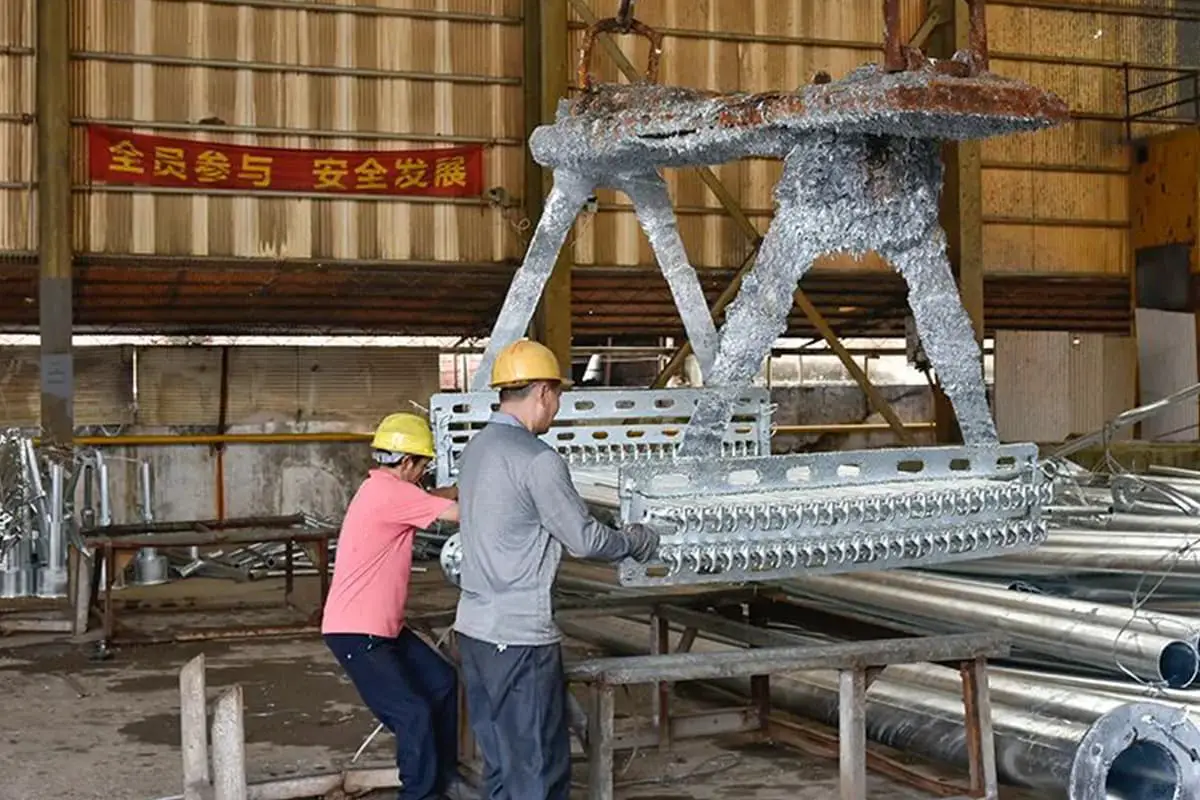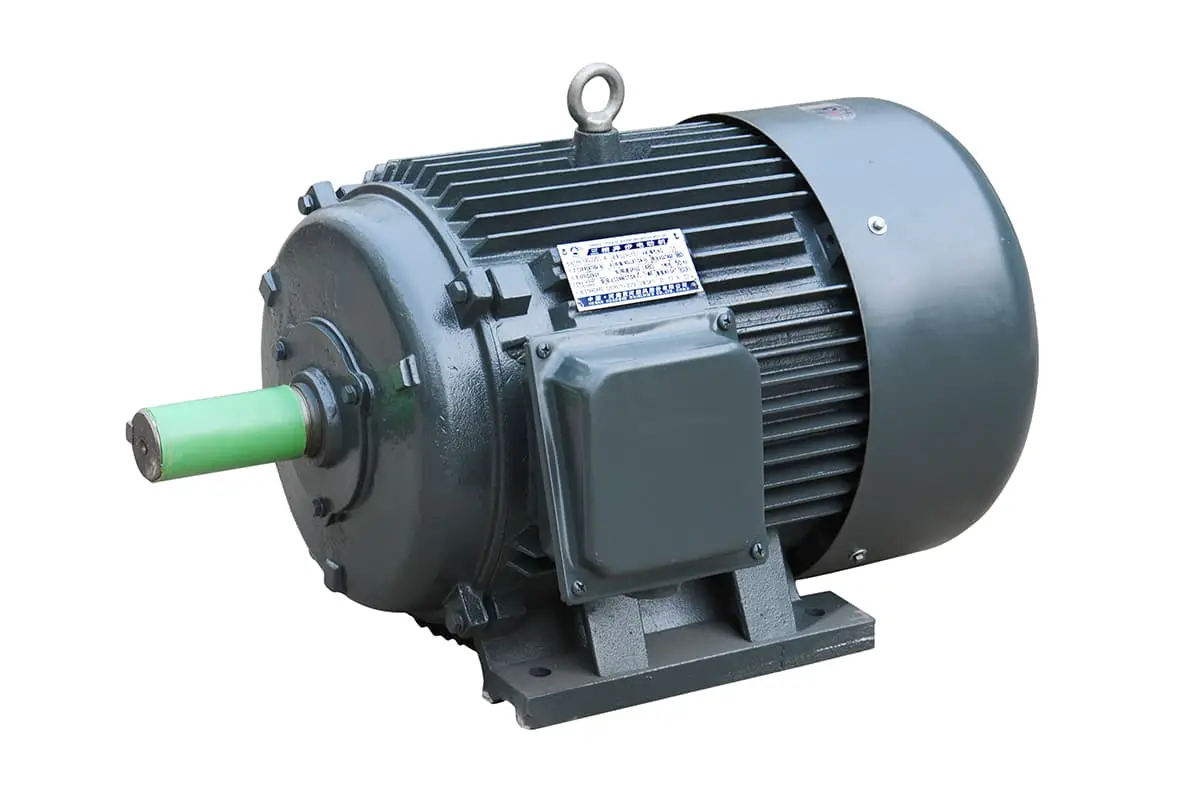
Why is hot-dip galvanizing crucial for steel protection? This process, immersing steel in molten zinc, ensures robust, long-lasting corrosion resistance by forming a thick zinc layer. From power transmission towers to bridge components, the demand for durable steel has soared. This article dives into the principles and steps of hot-dip galvanizing, detailing how it forms protective layers and enhances metal longevity. Discover the essential techniques and benefits of this vital process, ensuring your steel structures stand the test of time.

Hot-dip galvanizing, also known as hot-dip zinc coating, is a method of obtaining a metallic coating by immersing steel components in molten zinc.
In recent years, with the rapid development of high-voltage power transmission, transportation, and communication industries, the demand for steel component protection has increased, resulting in a steady increase in the demand for hot-dip galvanizing.
Typically, the thickness of an electroplated zinc layer ranges from 5 to 15μm, while the thickness of a hot-dip galvanized layer is generally above 65μm, and can even reach up to 100μm. Hot-dip galvanizing provides good coverage, the coating is compact, and free from organic impurities.
It is widely known that zinc’s mechanism for resisting atmospheric corrosion involves both mechanical and electrochemical protection.
Under conditions of atmospheric corrosion, the surface of the zinc layer features a protective film composed of ZnO, Zn(OH)2, and basic zinc carbonate.
This, to a certain extent, slows down the corrosion of zinc. This protective film (also known as white rust) will form a new layer if damaged. When the zinc layer is severely damaged, endangering the iron base, zinc provides electrochemical protection to the base.
With zinc’s standard potential of -0.76V, and iron’s standard potential of -0.44V, when zinc and iron form a microcell, zinc acts as the anode and dissolves, while iron, as the cathode, is protected.
Clearly, hot-dip galvanizing provides superior resistance to the atmospheric corrosion of the underlying iron metal compared to electroplating with zinc.

The process of forming a hot-dip galvanized layer involves the formation of an iron-zinc alloy between the iron substrate and the outermost pure zinc layer.
The surface of the workpiece forms an iron-zinc alloy layer during hot-dip galvanizing, which allows for excellent bonding between iron and the pure zinc layer.
This process can be simply described as follows: when the iron workpiece is immersed in molten zinc, a zinc and α-iron (body-centered) solid solution forms on the interface.
This is a crystal formed by dissolving zinc atoms in the iron base metal in its solid state. The atoms of both metals are fused together with relatively weak atomic forces.
Therefore, when zinc saturation is reached in the solid solution, the atoms of zinc and iron begin to diffuse. The zinc atoms that diffuse (or infiltrate) into the iron substrate migrate within the lattice of the base metal, gradually forming an alloy with iron.
The iron that diffuses into the molten zinc forms an intermetallic compound with zinc, FeZn13, which sinks to the bottom of the hot-dip galvanizing pot, becoming zinc slag.
When the workpiece is removed from the zinc immersion liquid, a layer of pure zinc is formed on the surface, which is a hexagonal crystal. Its iron content does not exceed 0.003%.

Workpiece → Degreasing → Washing → Pickling → Washing → Pre-plating immersion → Drying and preheating → Hot dip galvanizing → Finishing → Cooling → Passivation → Rinsing → Drying → Inspection
(1) Degreasing
Chemical degreasing or water-based metal degreasing detergent can be used to remove oil until the workpiece is completely wetted by water.
(2) Pickling
H2SO4 15%, thiourea 0.1%, 40~60℃ or HCl 20%, hexamethylenetetramine 1~3g/L, 20~40℃ can be used for pickling. Adding corrosion inhibitor can prevent over-corrosion of the substrate and reduce the amount of hydrogen absorbed by the iron substrate.
Poor degreasing and pickling treatment can result in poor adhesion of the coating, inability to plate zinc, or delamination of the zinc layer.
(3) Pre-plating immersion
Also known as a binder, it can maintain a certain activity of the workpiece before immersion plating to enhance the bonding between the coating and the substrate. NH4Cl 15%~25%, ZnCl2 2.5%~3.5%, 55~65℃, 5~10min. Glycerin can be added appropriately to reduce the volatilization of NH4Cl.
(4) Drying and preheating
In order to prevent the workpiece from deforming due to a drastic temperature rise during immersion plating, and to remove residual moisture to prevent zinc explosion and zinc liquid splashing, preheating is generally at 120~180℃.
(5) Hot dip galvanizing
It is necessary to control the temperature of the zinc liquid, immersion plating time, and the speed at which the workpiece is removed from the zinc liquid. If the temperature is too low, the zinc liquid has poor fluidity, the coating is thick and uneven, and there is a tendency to drip, resulting in poor appearance quality.
If the temperature is high, the zinc liquid has good fluidity, and it is easy for the zinc liquid to separate from the workpiece, reducing dripping and wrinkling, strong adhesion, thin coating, good appearance, and high production efficiency.
However, if the temperature is too high, the workpiece and the zinc pot iron loss is severe, a large amount of zinc slag is generated, which affects the quality of the zinc layer, the zinc consumption is large, and it may even be impossible to plate.
At the same temperature, the longer the immersion time, the thicker the coating. At different temperatures, the higher the temperature, the longer the immersion time required for the same thickness.
In general, manufacturers use 450~470℃, 0.5~1.5min to prevent workpiece deformation at high temperature and reduce zinc slag caused by iron loss.
Some factories use higher temperatures for large workpieces and cast iron pieces, but they should avoid the temperature range of high iron loss peaks.
In order to improve the fluidity of the hot dip galvanizing solution at a lower temperature, prevent the coating from being too thick, and improve the appearance of the coating, 0.01%~0.02% of pure aluminum is often added. Aluminum should be added in small amounts multiple times.
(6) Finishing
After galvanizing, the workpiece is mainly finished to remove excess zinc and zinc nodules on the surface, which can be done by vibration or manual methods.
(7) Passivation
The purpose is to improve the workpiece’s surface resistance to atmospheric corrosion, reduce or delay the appearance of white rust, and maintain a good appearance of the coating.
Chromate passivation is used, such as Na2Cr2O7 80~100g/L, sulfuric acid 3~4ml/L.
(8) Cooling
Water cooling is generally used, but the temperature should not be too low to prevent workpieces, especially castings, from cracking due to shrinkage caused by quenching.
(9) Inspection
The coating should be shiny, fine, without drips or wrinkles. The thickness of the coating can be measured by a coating thickness gauge, which is relatively simple.
The thickness of the coating can also be obtained by calculating the amount of zinc adhesion.
The bonding strength can be tested by bending with a bending pressure machine, bending the sample 90~180°, there should be no cracks or coating falling off. Hammering can also be used for inspection.








